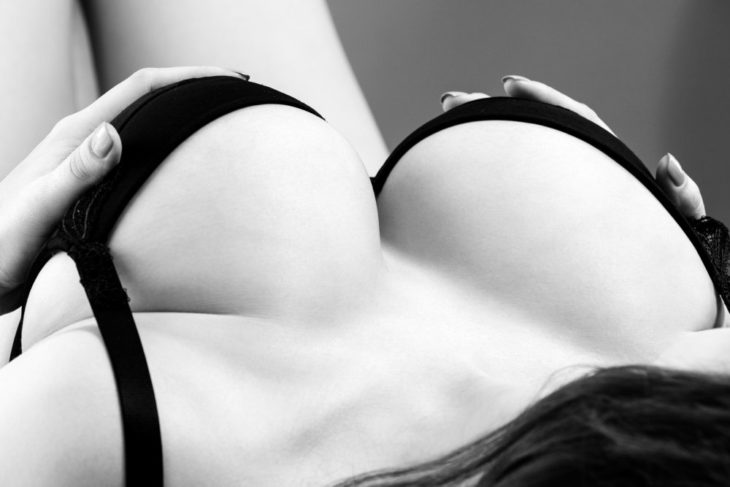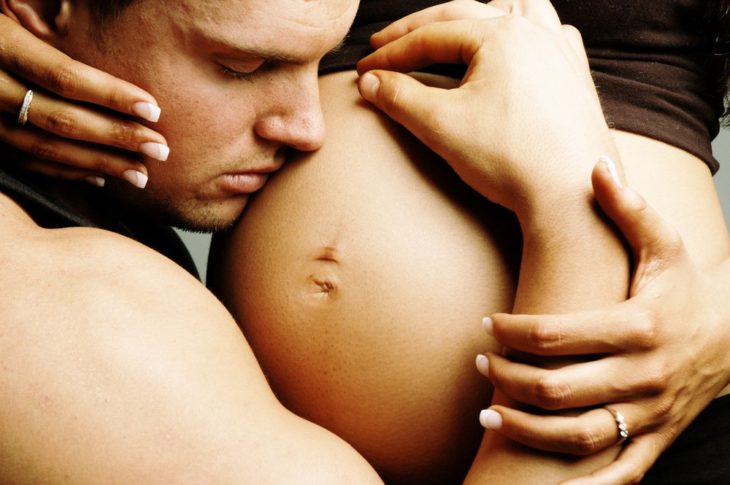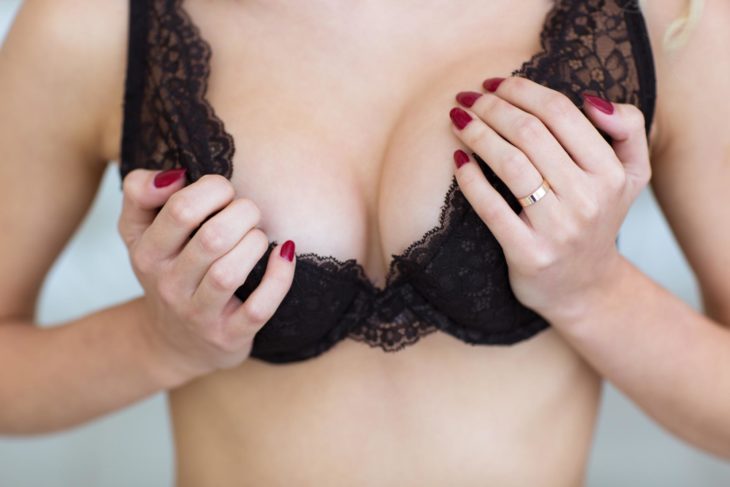Contents
They’re not just for hungry babies!
We’ve all got them, but we can’t all flaunt them without catching an indecency charge. They’re made for infants to get their nutrients in the first year of life, yet pulling them out in public to feed a baby is far too often prohibited. Of course, I’m talking about those little round appendages located prominently and proudly on your chest. You’ve had them your entire life, but you may not know all that much about them.
We’ve got all the details you need to know including why’re they’re bumpy, how big they are, and just how to enjoy them more than you do now!

Credit: AXL/Shutterstock
The Body’s Mood Rings

Credit: SunKids/Shutterstock
Nipples come in a range of colors which is due to your natural skin pigmentation, your age, and whether or not you’ve been breastfeeding. Nipples tend to darken as you age, and they will become darker while you’re breastfeeding.
They can also change in color during arousal as blood flows to the area for the purpose of pleasure.
Wide Range

Credit: Iakov Filimonov/Shutterstock
Areolas on women are usually larger than those on men, and they can span from a few inches wide to smaller than a dime. Weight gain and pregnancy can cause the areola to grow larger, and they may become smaller with weight loss.
The nipple itself comes in a variety of shapes. Some grow quite elongated during arousal
Friction

Credit: Maridav/Shutterstock
People with more sensitive nipples may find that friction wreaks havoc on the area as the skin is thinner and more protected than other areas on the body. Frequent rubbing may cause chafing or even bleeding.
Women may find it beneficial to put a lubricant like Vaseline on their nipples before doing vigorous exercise like running a marathon.
The Male Nip

Credit: Dean Drobot/Shutterstock
People have always wondered why males have them if they don’t need them. Well that’s because all human embryos start off life as female. It’s not until a few weeks into pregnancy that the male chromosomes kick in and take the development in a different directions.
The appendages have already formed at this point.
Erogenous

Credit: NATNN/Shutterstock
Sensitivity varies from person to person, but the nipple is considered to be an erogenous zone on both men and women. Women especially report feeling pleasure from the stimulation of their nipples.
A study done showed that the pleasure center of the brain was excited when nipples were being stimulated, so maybe that’s something to try next time you’re getting down in the bedroom!
Climaxing

Credit: Aleynikov Pavel/Shutterstock
Some lucky ladies out there have reported experiencing an orgasm just through nipple stimulation alone. Very few people can achieve this state, but they report that it’s “sharper and shorter” than a genital orgasm.
Bumpy Ride

Credit: mehmet alci/Shutterstock
Areolas and nipples aren’t as smooth as they appear to be from afar. They have small bumps which are either hair follicles or glands that release a small amount of lubricating oil. There’s no biological function for this oil, but some believe that the bumps are for breastfeeding babies to be help them locate and latch-on to the nipple.
If a bump appears and it seems abnormal or rash-like, you may need to get it checked out by a doctor.
A Little Leaky

Credit: pathdoc/Shutterstock
Breastfeeding women and non-breastfeeding women may experience a white, cloudy-colored discharge from the nipple if the breast is squeezed. That’s totally normal.
If you notice a whitish discharge that comes out on it’s own, it could be a sign of a growth on the brain. A bloody discharge could indicate breast cancer which both genders can develop. Green or black discharge may indicate an anomaly in the duct.
Numerous Nipples
Both men and women have a chance of developing supernumerary nipples anywhere on the body. They aren’t attached to any organ, and breast tissue won’t develop under them. Some people like to accentuate them by having them pierced.
Singer Harry Styles has four himself!
Baby Blues

Credit: Ivica Drusany/Shutterstock
There is a movement in western culture to get more women to breastfeed their babies as it has been shown that babies who breastfeed have better immune systems and get sick less often than babies who drink formula. That said, it’s not all that it’s cracked up to be.
Women who breastfeed can experience pain, soreness, cracked skin, bleeding, and rawness of the nipples because of their little one. They can also be bitten by babies when they start developing teeth.
Innies and Outies

Credit: Dean Drobot/Shutterstock
Some people have nipples that are inverted. This can be corrected with surgery, but it’s not a real problem unless you intend on breastfeeding.
Do you have knowledge about nipples that we missed out on? Let us know in the comments and SHARE this story!
Original by Emily Hingle
